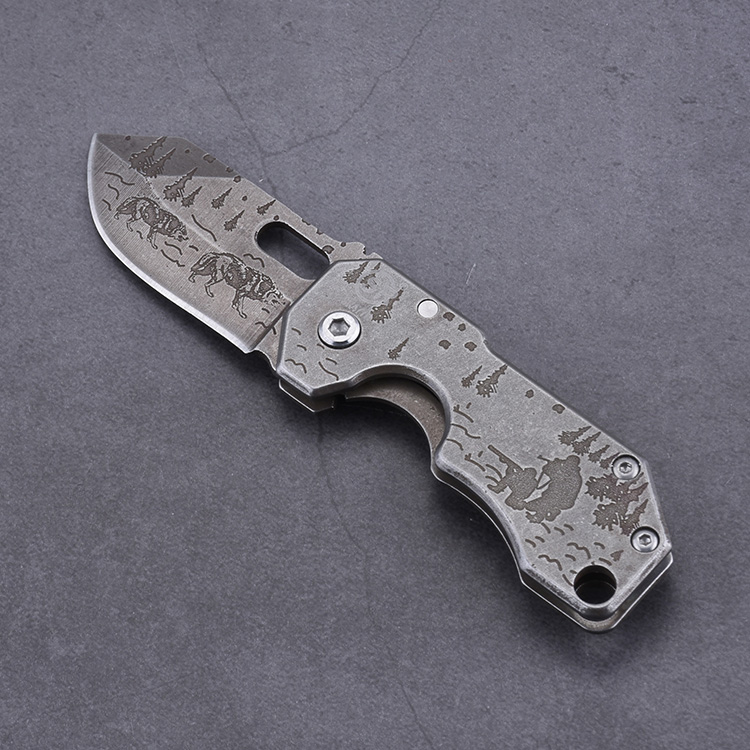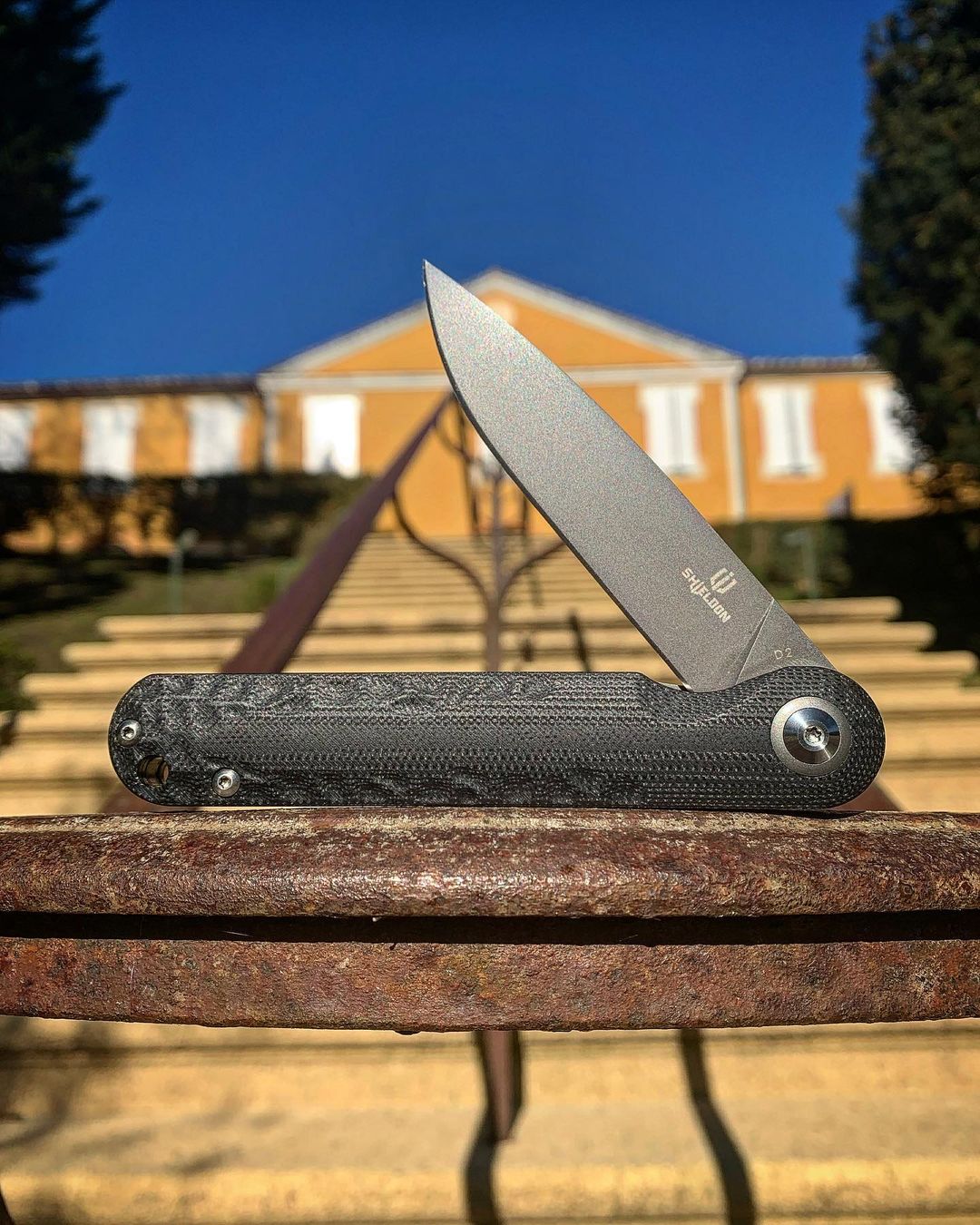Why Design Matters: A Guide to Knife Blades

A cool pocket knife has many parts, and each of them plays an important role as far as functionality is concerned. One of the aspects that sets all knives a[art is the design. You can tell the type of knife and what it is made for by one look at how it is designed. This is what distinguishes hunting knives from ordinary kitchen itineraries. The details are in the length of the blade, the weight, the patterns engraved on them, the type of material used to forge the blade, among a host of other features.
We are going to explore the main types of blades in hunting and camping knives, the different designs that exist, and why they are important. If you are a big knife enthusiast looking to add to your growing collection or starting off a new one, then stick around to the end.
Why Design Matters
Just like a car, there’s more to the tools that people use besides functionality. Appearances matter a lot, and knives are no exception to this rule. In fact, when it comes to blade styles, there’s nothing that can beat knives as far as options are concerned. There are unlimited shapes, length, and size that a knife can take and each of them will look good. So why does design matter when it comes to hunting and camping knives? The following are the main reasons.
- The design gives the knife structure. A hunting knife will have a different feel and physique compared to a kitchen knife since it is used for more intensive work. The design has to match that for maximum functionality to be achieved.
- Design gives the knife identity. You can tell what a knife is meant for by a single look. A hunting knife would, for instance, be bigger than an ordinary knife. It would also have a complex design with the handle having a different shape or the blade taking a unique direction. These are not just for show.
- The design of the knife boosts the functionality. The handle, for instance, may be adorned with all kinds of grooves that may appear to be aesthetic at first, but when you dig deeper, you quickly realize they are there to add an extra grip to the handle. Nothing is ever added just for the sake of it.
Knife Blades and What They Are Used For
It is hard to pinpoint the number of knife blades that exist since new ones are invented every day. However, based on popularity and the length of existence, there are certain blade types that can be considered to be at the very top. They include the following.
Drop-Point Blade

This is a common blade found in pocket knives that features a convex spine that curves smoothly down from the handle all the way to the blade point. This design gives it a bigger belly and uncontrolled point, which comes in very handy when slicing animals you just hunted. Depending on the size of the knife, bigger drop-point blades can be used for a variety of functions, making them an ideal knife to carry with you when you are unsure of what you may encounter when going out in the wild.
Sheepsfoot Blade

The Sheepsfoot blade derives its signature name from what it was used for back in the day, trimming the sheep hooves. It is characterized by a straight edge with a curved spine that points downwards to meet the point of the blade. They are designed for slicing with an extra buffer that prevents any accidental piercing. This makes it a relatively safe knife for the user. The only reservation people have with this knife is that the point is not that extensive, and this may limit the number of tasks one can use for outside slicing and carving small items.
Clip Point Blade
This is another common blade mostly found in folding knives. It is much shorter compared to the others on this list, but despite that, it has its own unique uses. The design of the blade is characterized by a spine that comes with a front section which, at first glance, appears a little clipped off. Then there’s a cut-out section that can be concave or straight, with everything ending up in a relatively sharp point. The design and the size of this blade make it portable, the kind of knife you would need for precision tasks that are quick. If you are looking for a heavy-duty blade, then the Clip-Point blade is not your knife.
Straight Back Blade
This is a straightforward design that features a normal look blade characterized by a very straight spine with a gentle curve on the cutting side that goes up to meet the point of the knife. This is a design you will most likely find in a fixed blade, and it can be heavy as they are meant for the heavy lifting type of work. They are usually accompanied by a solid and long handle for leverage and are sturdy enough to deal with slicing, chopping, and any other emergency task that may pop up while you are in the wild hunting or camping. You may want to get it a sheath if you want to have an easy time with it, though.
Tanto Blade
Tanto Blade takes the crown for being unique, thanks to an unusual blade design that borrows heavily from ancient Japanese culture. The blade has a straight, angular shape with a very sharp edge that rises abruptly to end into a very pointed finish. It is always accompanied by a long handle for leverage, and this makes it the best knife to go with if you are looking for an efficient piercing and slicing knife. The size of the blade varies from short small ones that are ideal for precision-based tasks and larger ones that can be used for much heavier tasks both outdoors and indoors.
Gut Hook Blade
As the name implies, this is a unique knife with a blade that has an inverted hook instead of the usually pointed finish. It is always small in size with a straight edge that is interrupted by an upward-facing hook that then slopes into a gentle slope. This design is meant for gutting an animal through the skin without damaging the pelt or the meat. It is a field dressing knife for wild game that every serious hunter must have in their collection. Gut hook blades are always attached to a sizable handle with a good grip that offers protection to the hand, stopping it from slipping over the blade.
Hawkbill Blade
Bizarre is the right word to use in this situation. This is a knife whose blade is curved downwards entirely to create a down-facing point like a smooth boomerang. The design is meant for a quick and easy pullback when cutting into any material or object. The blade is suited for tasks like pruning plants, cutting carpet, and linoleum, among many other roles. The Hawkbill blade, also called the talon blade, comes attached to a solid and long handle as a fixed blade. This increases the leverage the user has when handling tough tasks.
Spear-Point Blades
These are the ultimate forms of symmetry as they are made up of a blade that’s sharpened on both sides. The blade itself is very short and thick, making it one of the strongest blades you will ever come across. They are best designed for thrusting and work best as a defensive blade. The handle is also short and has a good grip, making it suitable for knife throwing. Unfortunately, due to its ability to be hidden without any trace and how versatile it is, this blade is illegal in many places around the world, and you may need special permits to carry it with you if you don’t want to get yourself into trouble.
Conclusion
As mentioned earlier, the types of blades are so varied and diverse that fitting them all here would be an impossible task, to say the least. However, there are many online resources that you can use to gain information on the blades that may fit your needs; for more information on where to get high-quality blades and advice on how to handle and maintain them, visit Shieldon(pocket knife suppliers) and browse through a long list of options that may fit your needs.
Article source: Why Design Matters: A Guide to Knife Blades | Shieldon

